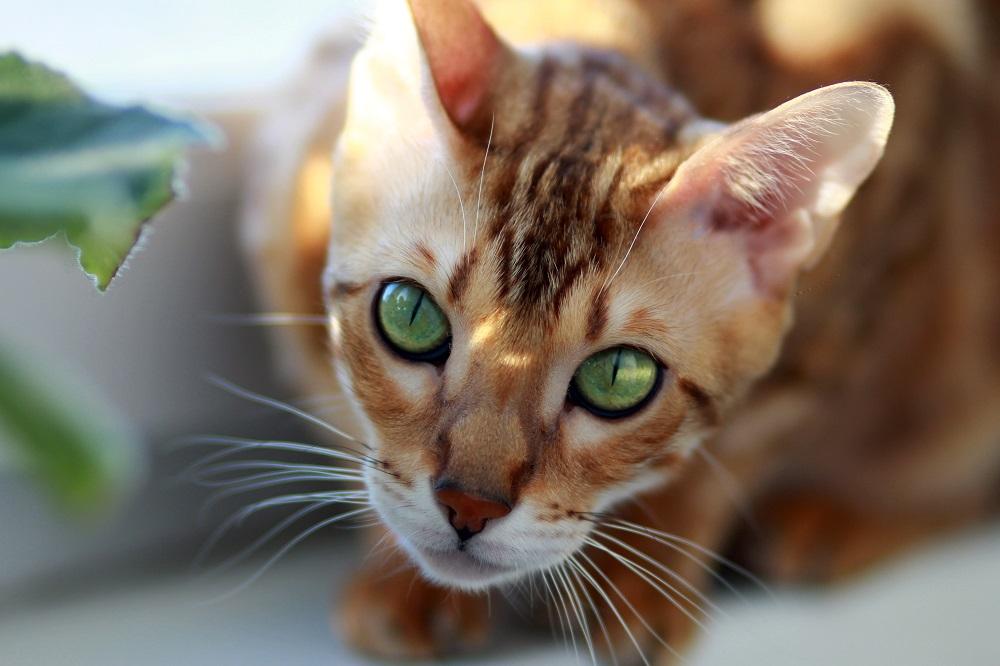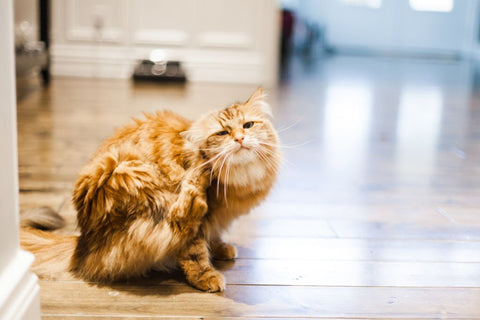
Fears and anxiety play a major role in a number of behavior problems in cats. Anxiety in cats is often implemented by intense or prolonged exposure to a stressful or unpleasant event. Here's what you need to know to help provide your anxious cat with the support and encouragement they need from you.

Background information
Fear can be defined as an emotional response urged by the perception of danger or threat. This emotional response ultimately leads to confrontation or escape from the threat (fight-or-flight response), or in extreme situations a freeze response.
Fear and the subsequent behavioral reactions are essential evolutionary adaptations. They increase the chances of survival in all animals. However, fear is also shaped by cognition and learning, depending of the context. Therefore, fear can be classified as rational or irrational.
The irrational form of fear, also called phobia, is characterized by excessive and persistent fear of certain situations and/or objects. The irrational fears are largely learned and can be unlearned with gradual exposure.
A feeling of fear or anticipation of future dangers from unknown or imagined sources is classified as anxiety. Intense or prolonged feeling of anxiety, or anxiety disorder, can interfere with the overall well-being of an animal. Most common form of anxiety specifically seen in pets (particularly cats and dogs) is separation anxiety.

Causes of anxiety in cats
"Most fears, phobias, and anxieties develop at the onset of social maturity, from 12 to 36 months of age. A profound form of fear and withdrawal of unknown cause often occurs around eight to ten months of age." - explains the petMD vet team. Most commonly, fears and phobias are a result of traumatic or unpleasant experiences or the inability to escape threatening situations.
A cat can also develop fears and anxiety due to limited exposure to specific objects or situations while they were young. For example, young kittens who were deprived of social exposure in the first few weeks of life often develop the fear of contact.
Cats with the history of abandonment, re-homing or neglect, on the other hand, commonly develop separation anxiety. Additionally, in certain cases when a disturbing event occurs in the presence of a particular object or person, the cat may associate the unpleasant feeling with this object or person as well.
Some illnesses, painful conditions and nervous system changes (associated with aging, infections or toxins) can also lead to behavioral problems, including fears and anxiety.
Symptoms and diagnosis
A frightened cat may attempt to hide and escape the threat or face it. The common signs of fear in cats therefore include withdrawal, hiding, trembling, rolling into a ball, flattened ears, reduced activity and escape on one side and dilated pupils, arched back, piloerection, hissing and aggression on the other.
If your cat is suffering from anxiety, however, you may notice some of the following behavioral patterns: nervous grooming (to the point of hair loss and skin damage), hiding for prolonged periods of time, extreme aggression without a solid motive, excessive vocalization, urination and passage of bowel movements outside the litter box, obsessive following, changes in the eating habits, nervous pacing, lethargy and destructive behavior.

When trying to assess the diagnosis of anxiety in cats, your veterinarian will first attempt to rule out any other possible causes of the odd behavior in your cat (i.e. nervous system or hormonal diseases). You will proceed attempt to identify any factors that may be causing your cat to be anxious.
Once you have identified the source of your cat's fear, you will want to examine if there is anything that reinforces the anxious behavior. Do you reward your cat's fearful behavior in any way (i.e. treats, pets etc.)? This could actually lead your cat to assume that what they're doing is the appropriate and healthy behavior.
Treatment and prevention
The treatment and care of your anxious cat depend on the intensity and type of your cat's fears. Extreme fear and anxiety in cats typically have to be addressed by a veterinarian who can prescribe medicinal therapy and advise appropriate protection from the stressful situations.
For as long as your cat is on medications, your veterinarian will regularly monitor the cat's blood status, health and behavior. This will allow them to adapt the treatment if necessary. The medical treatment usually takes from four to six months. These cats often require intensive care and protection from self-inflicted physical injuries during the episodes of fearful reactions.
In milder cases, you may be able to help your cat get over its fears by gradual exposure to the stressful situation, object or person. Before starting any training at home please consult with your veterinarian first. They will be able to provide personalized tips tailored specifically for your cat and its own fears and anxiety.
Gradual exposure approach
The idea behind the gradual exposure to stressful situations is to get your cat used to the stimuli that cause fear and teach them that they are not actually dangerous. This process has to be done slowly and carefully.
The gradual exposure approach starts with exposing a cat to the stimuli that are mild enough not to scare them. Whenever the cat remains calm and relaxed, it is rewarded with favored treats. If the stimuli are too intense, the process is stopped immediately. What's important to remember is that your cat should always be set up to succeed. Each time your cat gets scared, the problem will only be aggravated.
Furthermore, each time your cat escapes, the fearful behavior is reinforced. Thus, increase the intensity of stimuli while maintaining within your cat's comfort zone. Be patient and consistent until your cat completely desensitizes to the stimuli and works through its fear.
Again, before starting any training at home please consult with your veterinarian first. They will be able to provide personalized tips tailored specifically for your cat and its own fears and anxiety.

A practical example
If a cat is afraid of a particular person, for example, the training process will usually start by having the person sit beside the cat's crate while it's eating.
Eventually, this person can try to feed the cat with treats through the bars of the cage. Once the cat gets used to this, it can start being exposed to the person's presence outside the cage (if necessary, the cat can be held on a leash). Initially a solid distance should be maintained.
Over time, the distance can be decreased and the person should come closer to the cat at feeding times. This should be done until the cat is comfortable with this person feeding them. The same method can be applied to fear from other cats, objects and situations too.
Again, before starting any training at home please consult with your veterinarian first. They will be able to provide personalized tips tailored specifically for your cat and its own fears and anxiety.
Living and management: How can I support my cat?
If you're living with an anxious cat, you will likely have to offer them a full-time care. It is important to avoid fear-inducing stimuli, particularly when you're away, and to provide your cat with a safe and sound surrounding. If your cat is suffering from separation anxiety, you may want to consider hiring a cat-sitter and providing your cat with a number of activities to occupy them while you're away.
And remember, if your cat is suffering from extreme fears, make sure to protect them from self-inflicted physical injuries during the episodes of fear reactions.

Fears and anxiety in cats can significantly affect the quality of their life. While it can take a while for an animal to cope with its fears, your support and encouragement are essential. If your cat is suffering from extreme anxiety, please consult with your veterinarian immediately.



